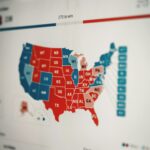Tradeoffs are Everywhere: Covid-Edition
One of the key principles of economics is that we live in a world of scarcity, so we’re constantly forced to make tradeoffs. We’re constantly forced to evaluate the costs and benefits of our decisions, and pick the best thing from a vast sea of possible options. Because we lack the resources to satisfy all of our possible desires, sometimes we have to make tough choices. Resources in this case doesn’t only include monetary and physical resources – time is perhaps our scarcest resource, and time is not unlimited. Choosing to engage in one activity entails giving up your next best opportunity. I, for example, teach economics on Tuesday and Thursday evenings. This is time I could be spending with my two-year-old. Yet after carefully evaluating the tradeoffs involved, I’ve decided teaching econ on these evenings is the best use of my time (don’t worry – I make tradeoffs at other points in the week to ensure the little guy gets ample love and attention!).
Individual preferences vary dramatically, so the decision I make might differ from the decision you would make. Still, having really good information about the potential risks and benefits helps everyone figure out how to navigate tough decisions. As Coronavirus has evolved this concept is even more important.
Economist Emily Oster, along with a team of medical and economic researchers, have been at the forefront of providing accessible, data-driven information about our evolving understanding of the virus. Early in the pandemic, they created a website called Covid-Explained that helps contextualize the deluge of information coming out about Covid-19. Oster, perhaps most famous for her data-driven books on pregnancy and parenting, is an expert at breaking down which sorts of studies produce reliable information – as well as which studies should be looked at with a healthy dose of skepticism.
The whole site is worth perusing, but in terms of understanding and evaluating tradeoffs, their “Interactive Risk Assessment Calculator“ is top-notch. I’ve repeatedly visited it over the past year when explaining tradeoffs to my classes. This calculator allows individuals to clearly evaluate both the risks and benefits of any potential decision they might make – and it accounts for the fact that people’s evaluations of different activities will almost certainly differ. It uses the best information we have to help make sense of the riskiness of various activities, and uses only the very best studies to make this determination.
We are constantly barraged with media reports detailing how risky various activities are in the age of Coronavirus. Not only do these reports fail to mention that all of these activities also have real benefits, but they also generally fail to mention whether the study upon which they’re basing their recommendations is reliable or not. Oster’s risk calculator allows us to weigh things like: is eating in an indoor restaurant worth the risk? How about visiting your parents or grandparents? Going to a playground with your children? Getting your haircut at a salon? There are undoubtedly risks to all of these activities, but they’re not all equally risky. And we can’t forget that they all have benefits too! More than any tool I’ve encountered, this risk calculator very tangibly helps us understand the tradeoffs involved in making a decision.
The calculator is also interactive, which makes it even cooler. This means it allows different individuals to evaluate the tradeoffs according to their own preferences. While you might be comfortable undertaking activities that rank a 7 out of 10 in terms of riskiness, I might only be comfortable with undertaking activities that rank 4 out of 10. Tradeoffs look different for everyone. It’s also worth noting that our understanding of the riskiness of various activities is constantly evolving. Remember when we all thought we had to comprehensively sanitize our groceries after each trip to the store? While this might seem like a major Achilles Heel for the risk assessment calculator, it’s worth recognizing that we seldom make decisions with perfect information. We generally gather information only up to the point where the benefits of gathering more information outweigh the costs, then we make decisions. If 2020 has taught us anything, perfection is not for this world.
You don’t need to be an economist to recognize that tradeoffs are omnipresent. Yet in the age of COVID-19, when decision-making has become ever more difficult, having a source to help you evaluate tradeoffs is invaluable.




